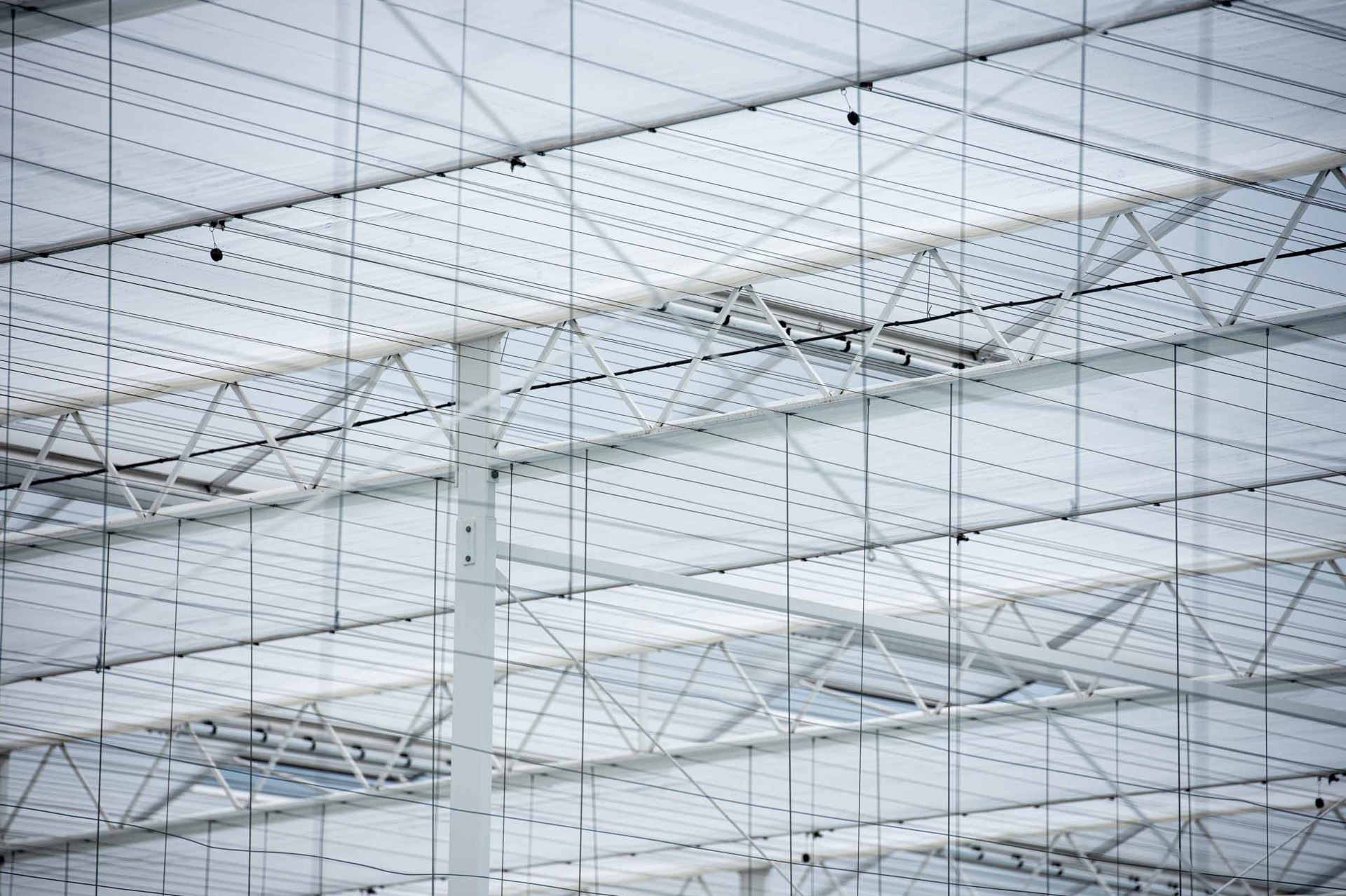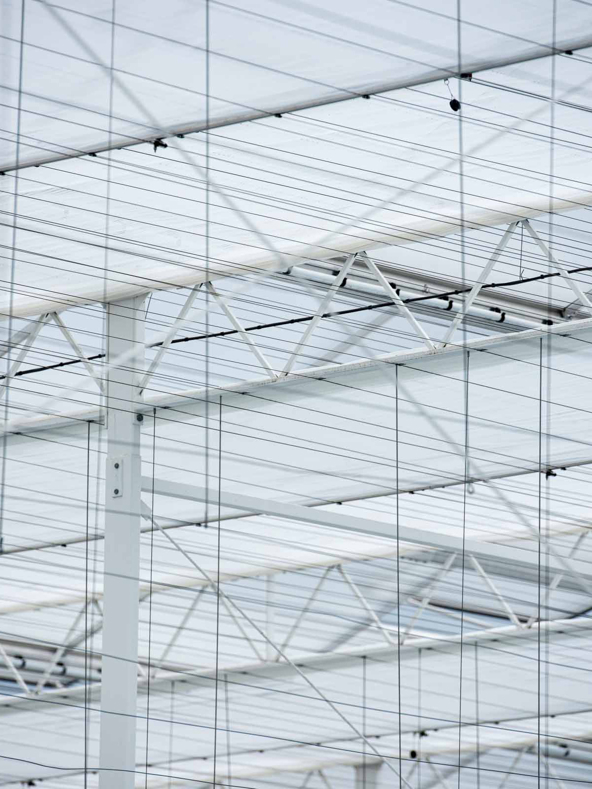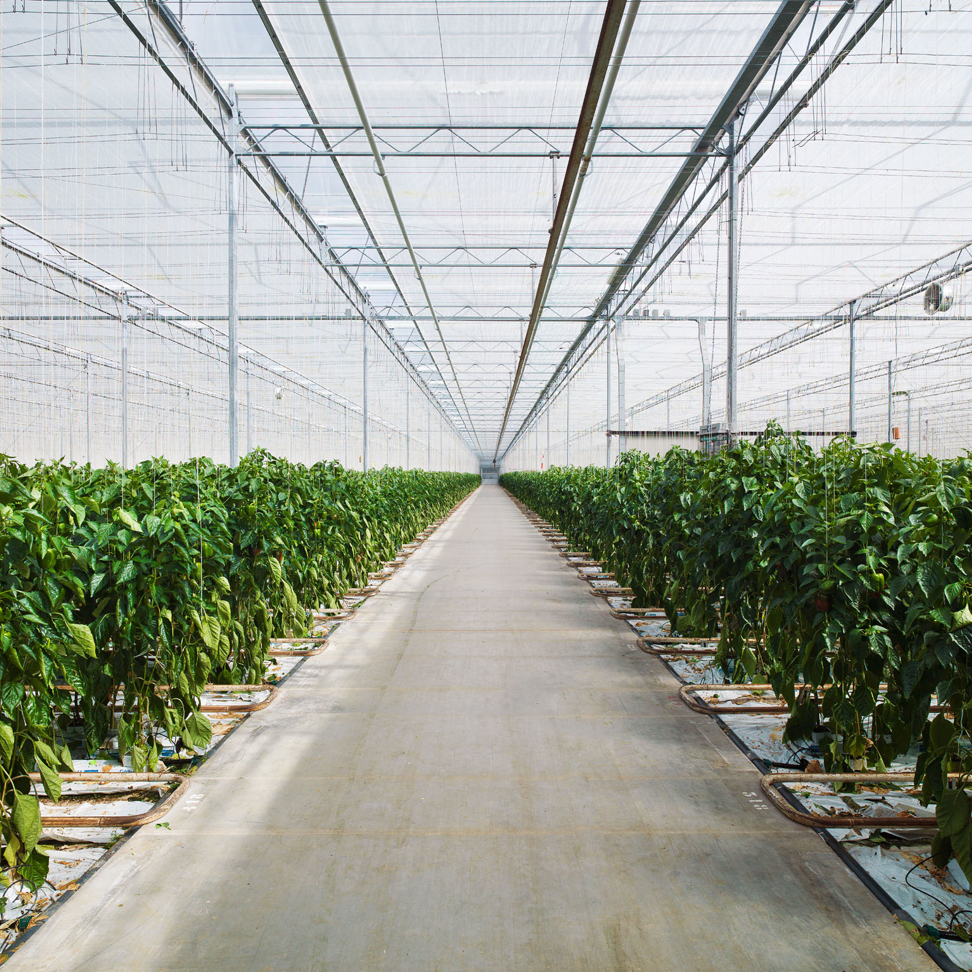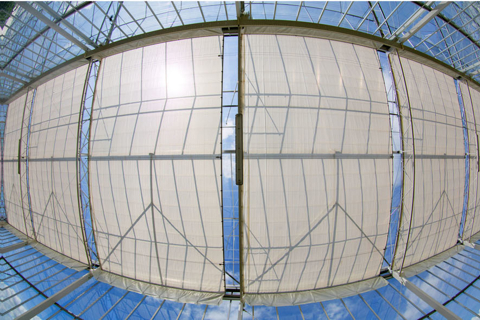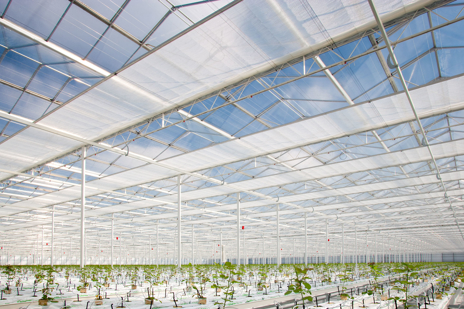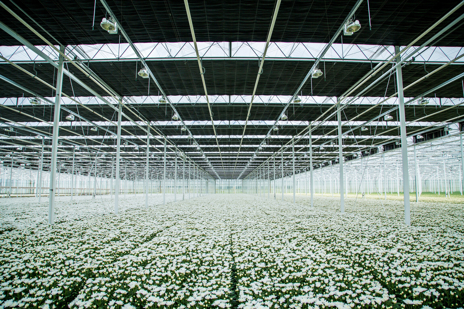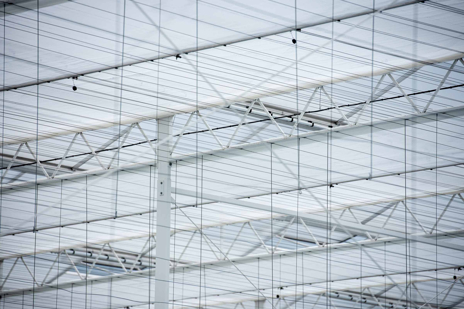Diffuse screen fabrics are available with an open structure, which in combination with ridge ventilation, provides optimal cooling and sun protection. It is also available with a closed structure, this reduces cooling in the evening, minimize the risk of condensation forming on the crop, and save energy at night. The common feature of all diffuse screens is the light diffusion due to the applied white strips woven or knitted into the fabric. As a result, over the past decade, diffuse screens have been increasingly popular among growers of various crops in different climates.
Light Diffusion
With diffuse light, no leaf is left in the shade. When the total sunlight radiation remains constant, there is a more even distribution of light intensity across the leaves, reducing spots of excessive brightness or excessive shade. High-intensity light on leaves is generally less effective for photosynthesis. Studies indicate that, in a direct light environment, light distribution is suboptimal for photosynthesis, both horizontally and vertically.
Uniform horizontal light distribution is crucial for consistent plant growth. On days with high levels of direct light, the light distribution is far from ideal. Shadows are cast not just by the leaves themselves, but also by the greenhouse structure and any installed equipment. This results in some plants getting too much light exposure, leading to stress and burn damage, while others linger in the shadows, receiving insufficient light and showing stunted growth.
For tall crops like tomatoes, peppers, and cucumbers, vertical light distribution is also problematic under direct lighting conditions. The top leaves capture most of the light, which exceeds what can be effectively used for photosynthesis. The lower leaves, which receive little light, contribute minimally to the photosynthesis and growth of the plant. Therefore, achieving a balanced light distribution is crucial for healthy and uniform plant development.
